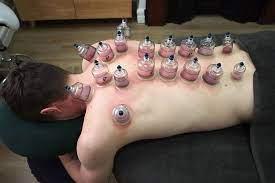Cupping Therapy in Modern Healthcare: Integrating Alternative and Conventional Medicine
Cupping therapy, an ancient form of alternative medicine, has gained significant popularity in recent years due to its purported health benefits. This practice involves placing cups on the skin to create suction, which is believed to facilitate healing, reduce pain, and promote relaxation. Despite its widespread use and historical roots, there remains ongoing debate about the efficacy and scientific basis of cupping therapy.a

The origins of cupping therapy can be traced back to ancient Chinese, Egyptian, and Middle Eastern cultures. Traditional cupping was performed using animal horns or bamboo, which were later replaced by glass, silicone, or plastic cups. The process involves heating the air inside the cup and placing it on the skin, where the cooling air creates a vacuum. Alternatively, modern techniques use suction pumps to create the necessary vacuum. The cups are typically left in place for several minutes, and the procedure may leave temporary circular marks or bruises on the skin.
Proponents of cupping therapy claim that it helps improve blood circulation, relieve muscle tension, and enhance overall well-being. Many athletes and celebrities have endorsed Holistic healing as part of their recovery and wellness routines, often sharing images of the distinctive marks left by the cups. Some studies suggest that cupping therapy can alleviate symptoms of conditions such as chronic pain, migraines, and arthritis.
However, the scientific community remains divided on the effectiveness of cupping therapy. Critics argue that there is insufficient high-quality evidence to support the claimed benefits. Many studies on cupping have been criticized for their methodological flaws, small sample sizes, and lack of rigorous controls. As a result, the perceived benefits of cupping therapy are often attributed to placebo effects rather than any specific therapeutic mechanism.
Moreover, while cupping therapy is generally considered safe when performed by trained practitioners, there are potential risks associated with the practice. These include skin infections, burns, and exacerbation of existing skin conditions. It is essential for individuals considering cupping therapy to consult with a healthcare professional to ensure it is appropriate for their specific health needs.
In conclusion, cupping therapy remains a controversial topic within the medical and wellness communities. While many people report positive experiences and relief from various ailments, the lack of robust scientific evidence leaves room for skepticism. As with any alternative treatment, individuals should weigh the potential benefits against the risks and seek professional advice before incorporating cupping therapy into their health regimen.
